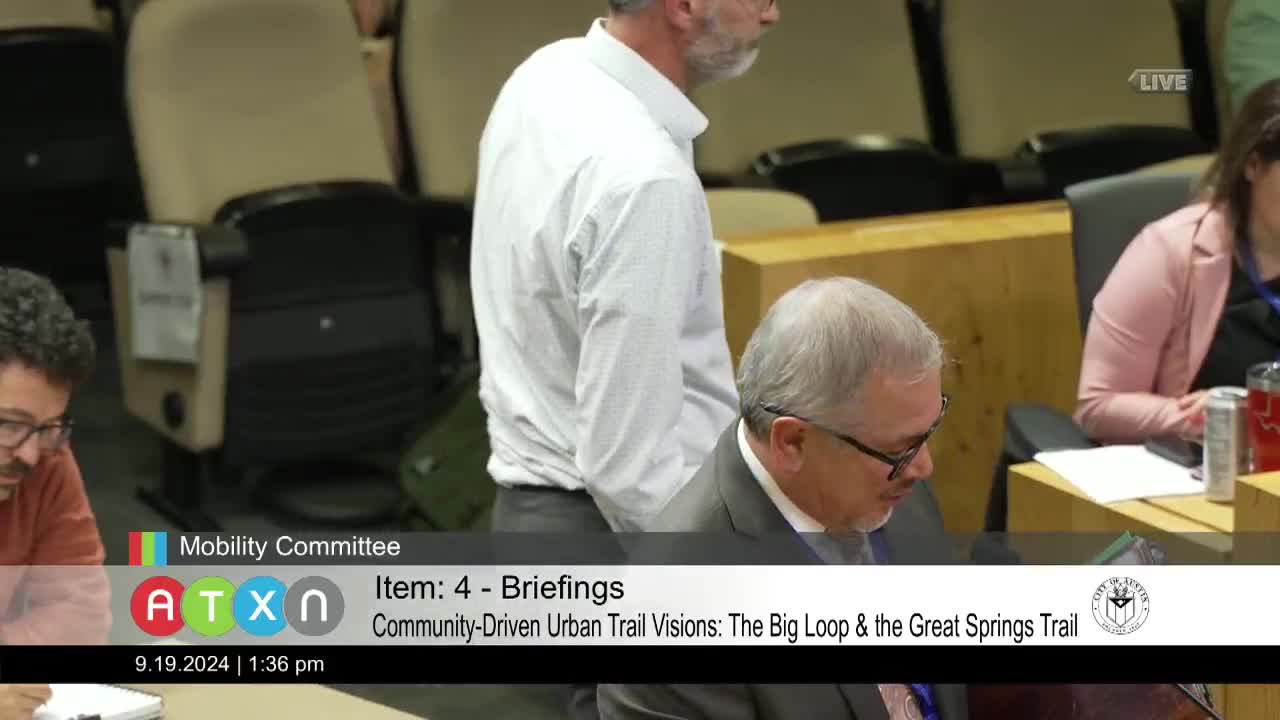City plans ambitious urban trail network for all ages
September 19, 2024 | Austin, Travis County, Texas
This article was created by AI summarizing key points discussed. AI makes mistakes, so for full details and context, please refer to the video of the full meeting. Please report any errors so we can fix them. Report an error »

During a recent government meeting, Richard Mendoza, Director of Transportation Public Works, addressed the limitations of street impact fees in Texas, noting that they can only be applied to road capacity projects, unlike other states that allow these fees to support pedestrian facilities. This restriction has implications for urban planning and the development of pedestrian infrastructure in the state.
Mendoza also highlighted the importance of clearly defining urban trails to the public, emphasizing that they should not be confused with standard sidewalks. He stressed the need for high-quality infrastructure that serves both transportation and recreational purposes. The city is moving towards creating separated bikeways and pedestrian paths to accommodate the growing use of electric bikes and scooters, which provide affordable transportation options for economically challenged residents.
The discussion included examples of successful trail configurations, such as the Boggy Creek Trail in East Austin, which features a separated bikeway and pedestrian path. Mendoza described the design standards for these trails, aiming to create facilities that are safe and accessible for all ages and abilities.
Additionally, questions arose regarding the status of plans for protected bike lanes on 3rd Street in downtown Austin, particularly in relation to upcoming light rail developments. This inquiry reflects ongoing concerns about integrating various modes of transportation in urban planning efforts. The meeting underscored the city's commitment to enhancing its transportation infrastructure while addressing community needs and expectations.
Mendoza also highlighted the importance of clearly defining urban trails to the public, emphasizing that they should not be confused with standard sidewalks. He stressed the need for high-quality infrastructure that serves both transportation and recreational purposes. The city is moving towards creating separated bikeways and pedestrian paths to accommodate the growing use of electric bikes and scooters, which provide affordable transportation options for economically challenged residents.
The discussion included examples of successful trail configurations, such as the Boggy Creek Trail in East Austin, which features a separated bikeway and pedestrian path. Mendoza described the design standards for these trails, aiming to create facilities that are safe and accessible for all ages and abilities.
Additionally, questions arose regarding the status of plans for protected bike lanes on 3rd Street in downtown Austin, particularly in relation to upcoming light rail developments. This inquiry reflects ongoing concerns about integrating various modes of transportation in urban planning efforts. The meeting underscored the city's commitment to enhancing its transportation infrastructure while addressing community needs and expectations.
View full meeting
This article is based on a recent meeting—watch the full video and explore the complete transcript for deeper insights into the discussion.
View full meeting
